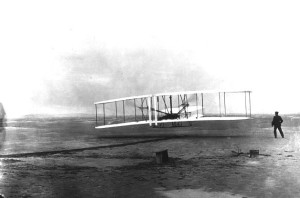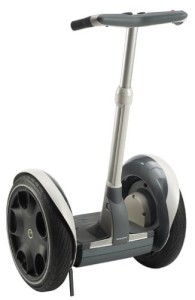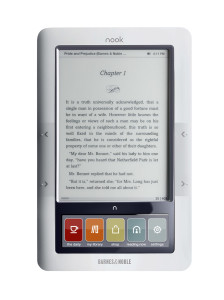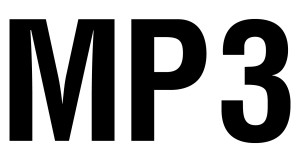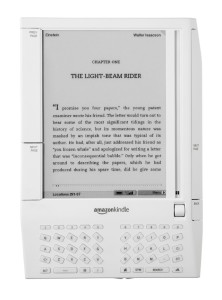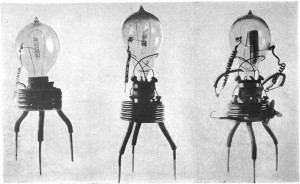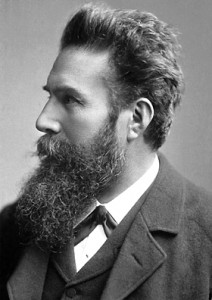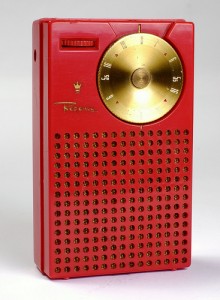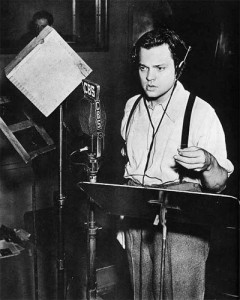Miscellaneous Technology
Wright Brothers First Powered Flight
Orville and Wilbur Wright make their famous first controlled and sustained flights with a heavier than air, powered aircraft. Orville made the very first flight which lasted about 12 seconds. Three more flights were made that day by both brothers, with the most successful being the fourth and final flight in which Wilbur flew for 59 seconds. The work done by the Wright brothers helped spawn the aviation industry.
Segway Unveiled
Inventor Dean Kamen unveils the Segway self-balancing, battery-powered vehicle on the TV show Good Morning America. The Segway uses computers and motors in its base to keep itself upright while the user is riding it. Users shift their weight to control the Segway. While not considered a commercial success, the Segway has definitely become a familiar icon of personal transportation.
Barnes and Noble Releases Nook
Book retailer Barnes and Noble releases their first Nook e-reader to compete with the highly successful Amazon Kindle, released two years earlier.
While late to the game, and competing not only against Amazon but Apple’s iPad for e-reader marketshare, the Nook has competed well, likely due to Barnes and Noble’s strength as one of the few remaining brick and mortar book stores.
MP3 Patented in US
November 26, 1996
United States Patent 5,579,430 is granted to the Fraunhofer Institut in Germany for a “digital encoding process”, the technology used in MEPG Audio Layer III, more commonly known as MP3. MP3 technology paved the way for the digital music industry by creating a high-quality format that was compressible so that many songs could fit on the relatively small data storage devices of the time. Fraunhofer had started work on compressing music as far back as 1977, began work on what would become MP3 in 1987, and was awarded a patent in Germany in 1989.
Toy Story Changes the Movies
Walt Disney Pictures releases the Pixar Animation Studios production Toy Story, the first major motion picture that is created completely by computer-generated animation. A breakthrough film, Toy Story set the standard for all future computer animated films to follow and catapulted Pixar into a household name.
Amazon Ignites the Kindle
Amazon introduces their Kindle e-book reader. Where other companies had released e-book readers in previous years with limited success, the Kindle’s integration with Amazon’s industry leading book distribution system helped catapult the e-reader into the the mainstream consciousness. The Kindle sold out within five hours of its debut.
Vacuum Tube Invented
John Ambrose Fleming applies for a US patent on what he called the “oscillation valve“, the first example of the vacuum tube. Vacuum tubes would form the basis of electronic technology for nearly 50 years until the development of the transistor. Fleming’s invention has been described as one of the most important developments in the history of electronics.
He Put the “X” in X-Rays
German Physics Professor Wilhelm Röntgen stumbles upon what he would later describe as “X-rays” while experimenting with electrical discharge tubes. Curious as to what was causing a faint green glow on a nearby fluorescent screen, Röntgen began systematically studying the unknown rays and published the first paper on the phenomenon less than two months later. He referred to the rays as “X”, indicating that they were an unknown form of radiation at the time. The name has stuck, although in several languages, X-rays are referred to as Röntgen rays, in tribute to his discovery. Incidentally, Röntgen was awarded the very first Nobel Prize in Physics in 1901 for his work on X-rays.
First Transistor Radio Goes on Sale
The Industrial Development Engineering Associates company begins selling the Regency TR-1, the world’s first commercial transistor radio. Texas Instruments designed and developed the transistor technology who then partnered with IDEA to design and manufacturer the completed radio. The TR-1 sold over 100,000 units, ushering in the commercial transistor industry.
War of the Worlds Scares Pants Off Nation
Orson Welles broadcasts his radio adaptation of The War of the Worlds, which reportedly caused panic among listeners who believed the theatrical presentation was a real news broadcast. Regardless of the actual levels of panic caused, The War of the Worlds is one of the most famous radio broadcasts in history.

